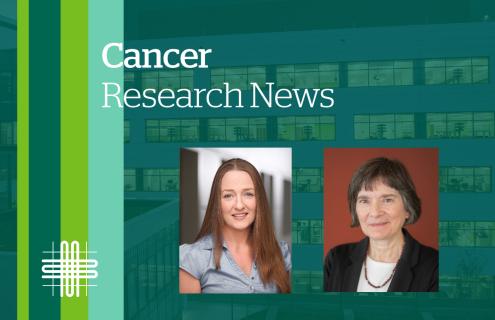
Breast density is one factor in assessing a person’s risk of developing breast cancer. Existing state breast density notification laws have increased breast density awareness among patients and providers, but clinical records had not been incorporated in studies to confirm accuracy of personal breast density knowledge. A research team at Dartmouth Cancer Center worked with the Breast Cancer Surveillance Consortium (BCSC) to both survey women and incorporate their clinical records from 15 mammography facilities across three states to find out how much women knew about their own breast density.
The study, “Breast Density Knowledge in a Screening Mammography Population Exposed to Density Notification,” recently published online in the Journal of the American College of Radiology (JACR), found that while breast density knowledge may be increasing due to existing state laws, there is still room for improvement, and that clinicians need tools to engage with women in understanding their personal breast cancer risks and screening options.
“Particular consideration should be given to those with lower literacy in the design of those tools,” says lead author Rebecca E. Smith, MS. “There may also be benefit to standardized breast density communications for all women—women with dense and non-dense breasts—as opposed to just women with dense breasts.”
The team set out to measure accuracy and predictors of women’s breast density knowledge in a nationally representative sample of women eligible for breast cancer screening who had not had a previous breast cancer. They also examined women’s understanding of the implications of breast density and breast density’s impact on future screening intentions.
The majority (76%) of women with dense breasts correctly knew their breast density, while most women with non-dense breasts did not (14%). About one-third of women with non-dense breasts believed they had dense breasts and women who believed they had dense breasts were more likely than women who believed they had non-dense breasts to want supplemental screening. Density reporting to all women, compared to only women with dense breasts, was associated with an increased chance of accurate breast density knowledge for women with non-dense breasts. Lower education was associated with a lower chance of correctly knowing one’s own density.
“Health care providers will need decision support tools to keep informed of evolving evidence on who may benefit from supplemental screening and for engaging women in shared decision making,” says Smith. “Density notifications should be tailored and accessible to a wide range of literacy levels. There may be benefit to standardized breast density communications for both women with dense and non-dense breasts.”
Anna N.A. Tosteson, ScD, the study’s senior author, notes “Our study’s findings are important for policy makers to consider when designing pending national breast density notification regulations.”
* * *
Rebecca E. Smith, MS, is a PhD student at Dartmouth in The Dartmouth Institute for Health Policy and Clinical Practice doctoral program and previously was a Project Manager in The Dartmouth Institute for Health Policy & Clinical Practice, Geisel School of Medicine at Dartmouth.
Anna N.A. Tosteson, ScD, is the associate director for Population Sciences at Dartmouth Cancer Center, the James J. Carroll Professor of Oncology and a professor in The Dartmouth Institute for Health Policy and Clinical Practice, and the Departments of Medicine and of Community and Family Medicine, Geisel School of Medicine at Dartmouth.